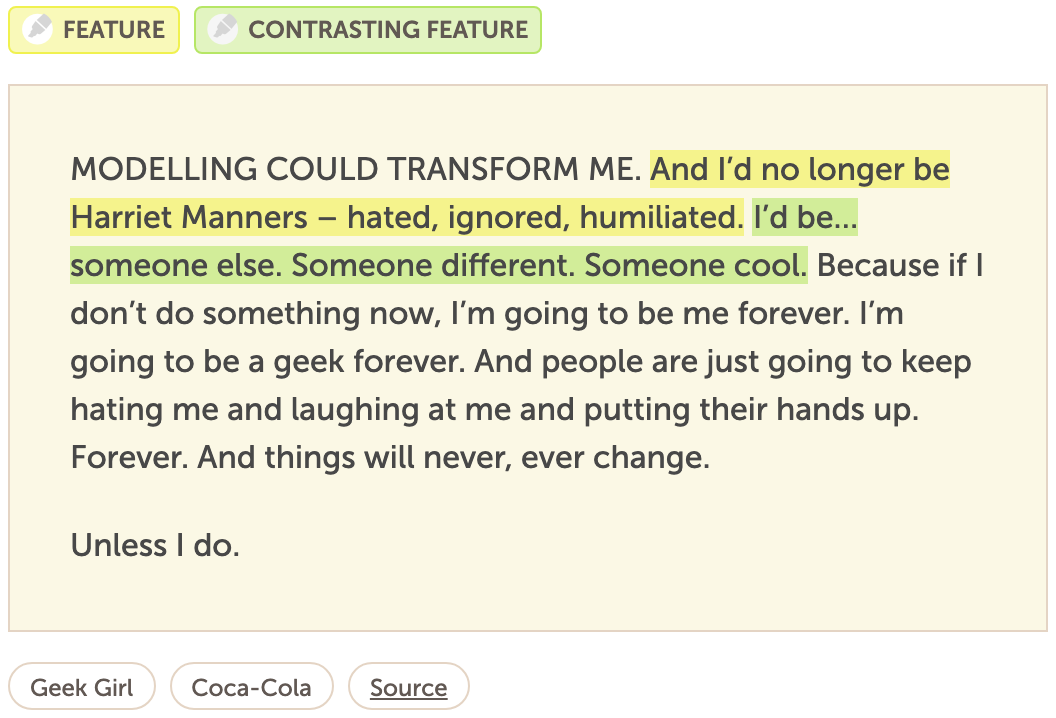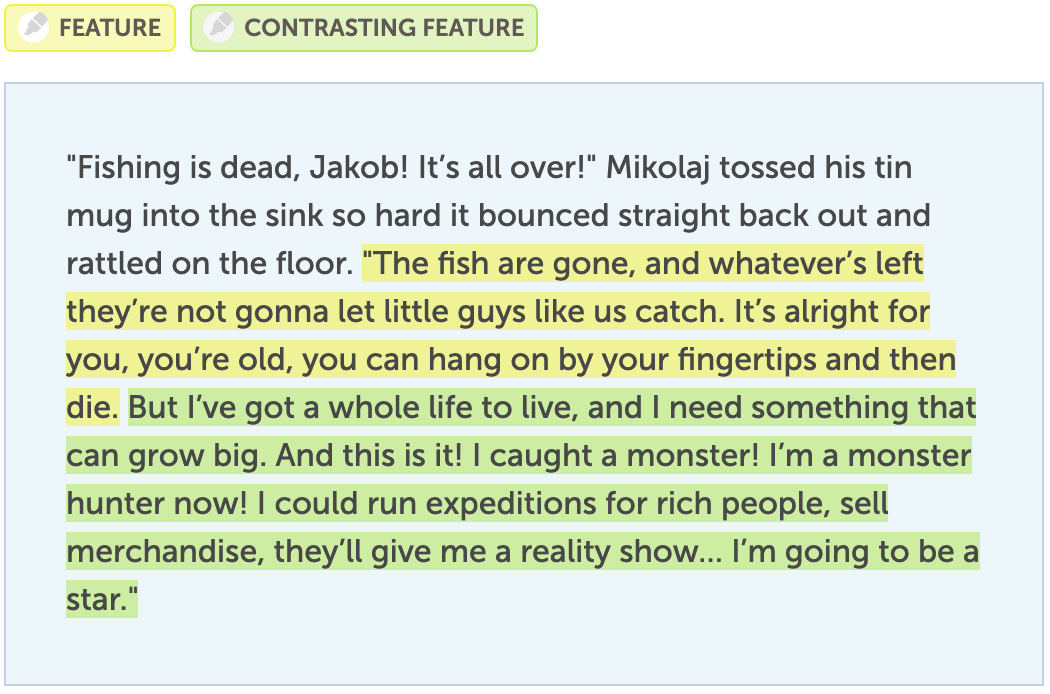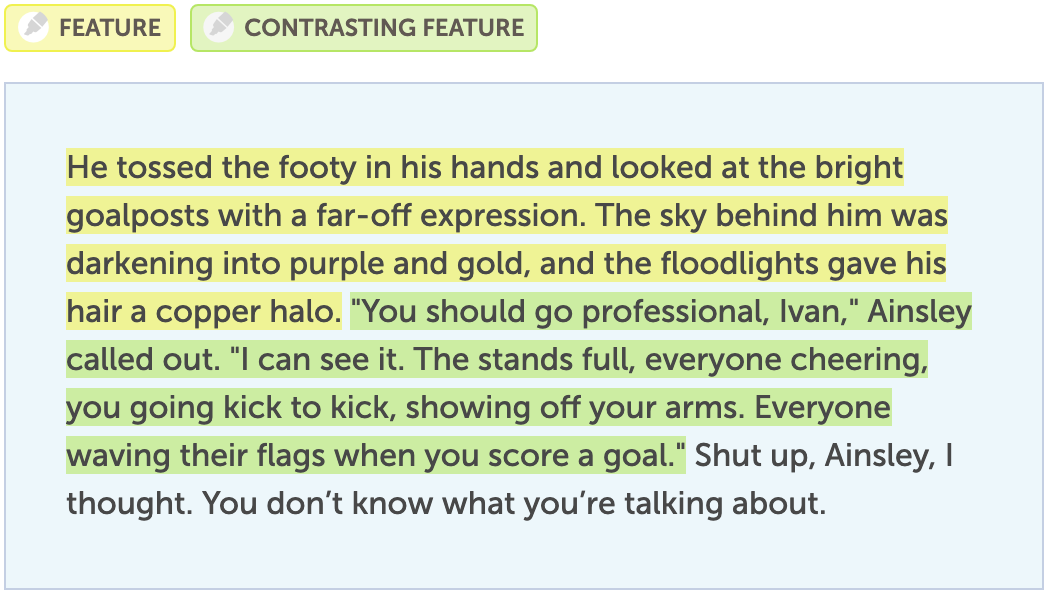A powerful new lesson on contrast & juxtaposition
If goals and motivations are the engine of story, then contrast and juxtaposition are the laws of thermodynamics that make that engine work.
This is a long lesson, but it's worth the effort because if you can master contrast and juxtaposition, then every other story element becomes easier.
You can preview the new Contrast & Juxtaposition lesson here, or you can read below for a quick summary.
This lesson is divided into four topics.
Topic one: The concept of contrast
We study a series of images to learn the relationship between contrast, juxtaposition, and resonance. We identify principles in a visual context that we can transfer to writing.
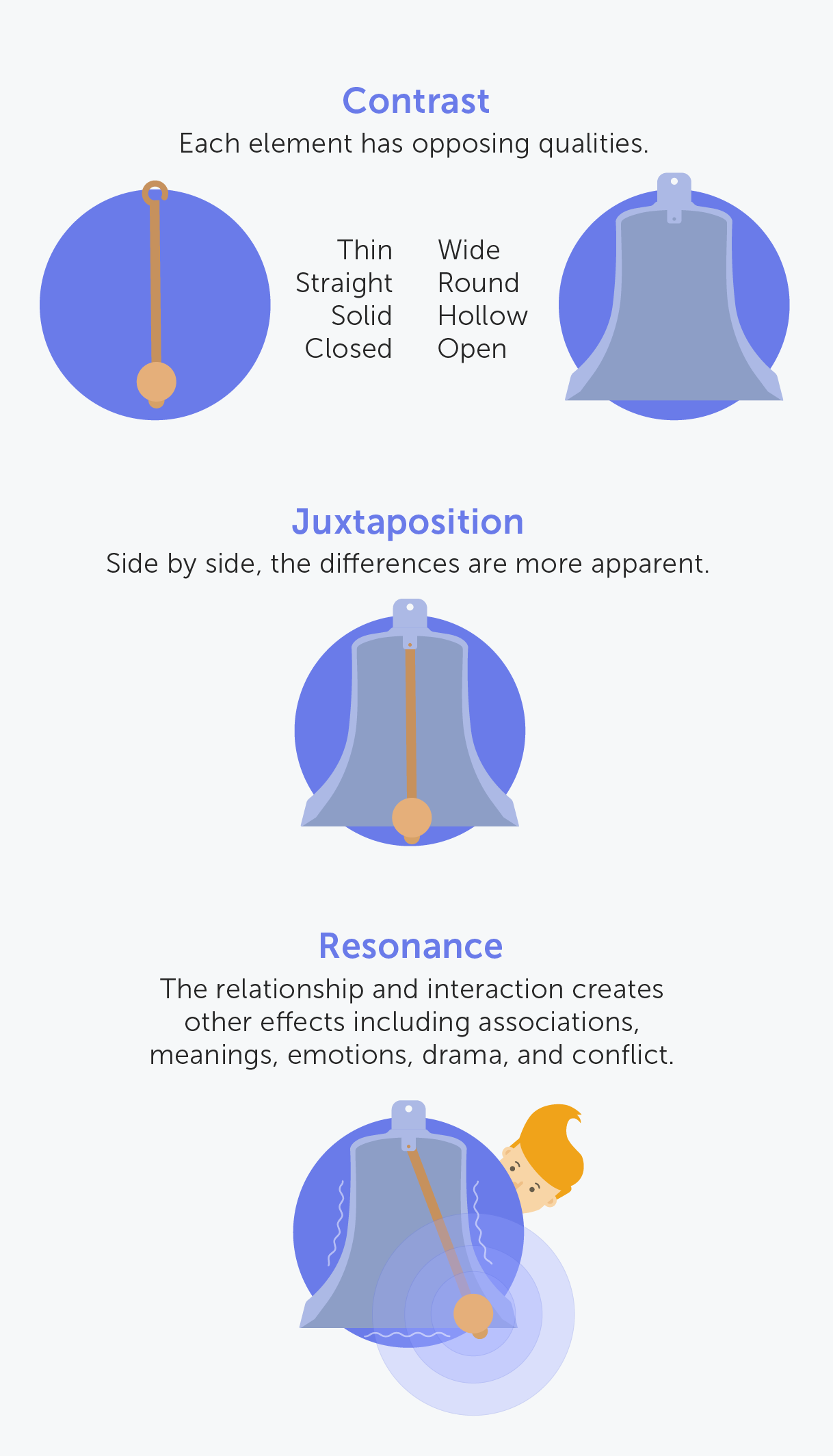
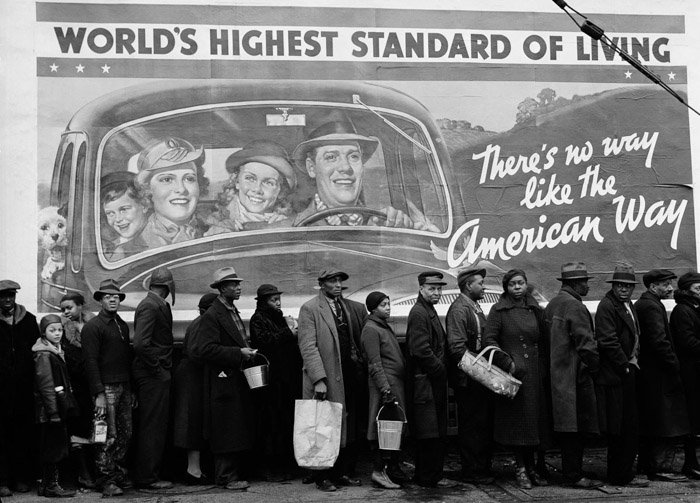
Topic two: How contrast helps us perceive the world more vividly
We write variations on snippets from The Graveyard Book, Growing Up Disabled in Australia, and My Family and Other Animals in order to explore how contrast can illuminate features such as relationships, personality, and the passage of time.
Topic three: How contrast creates emotional effects
We then look at how the resonance from juxtaposition can be used to create emotional effects such as fear, surprise, or humour.
Topic four: How contrast creates conflict
Finally we explore how contrast can escalate into conflict when opposing sides attempt to change the status quo.
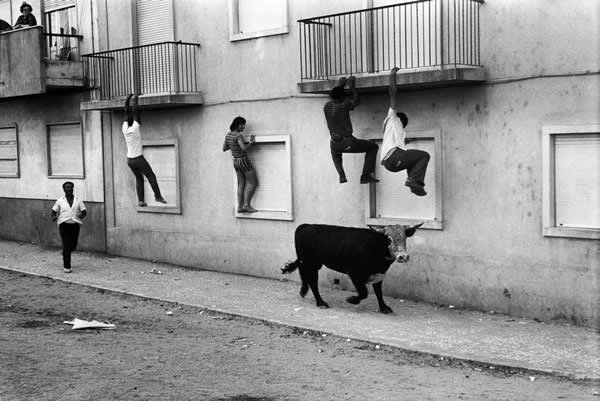
For the last two topics we use sources such as Peter Pan, Animal Farm, and I Am a Genius of Unspeakable Evil and I Want to Be Your Class President.
Pulling it all together to develop a rich story world
Throughout the lesson we ask students to develop ideas on a single theme, and at the end we collate all their responses into a single checkpoint.
We're pretty confident that students will be amazed at how rich a world they can create simply by experimenting with contrast.
Examples of writing
Unlike other Writelike lessons, in this lesson we only use one highlighting pattern: feature vs contrast.
We use this over and over again to show how contrast can be created in different ways. For example, we use this snippet from Geek Girl to illustrate present vs future-imagined self:
We provide one set of worked examples throughout the lesson that develop a Polish fishing-boat monster story:
And we use another set of examples to develop a suburban supermarket teenage love triangle:
What is this lesson good for?
- Mastering one of the most powerful tools in narrative writing!
- That said, we wouldn't recommend beginning with this lesson. Get a grip on the basics first (characters, action, setting, dialogue).
- The lesson oscillates between abstract and concrete. If you find the abstraction too much, skip it and simply take the writing exercises on face value.
- We suggest this lesson is for older students, maybe Grade 9+, but as usual it all depends on the class and the way you want to teach.
Again, you can preview the new Contrasts & Juxtaposition lesson here.
What's next?
As we've said, contrast leads naturally to conflict—so that's what's coming next.

